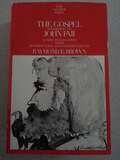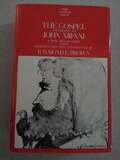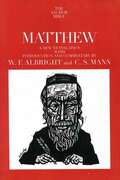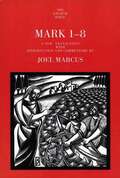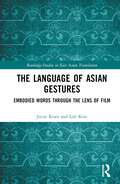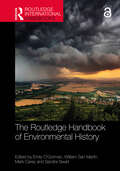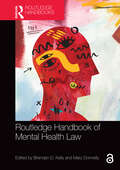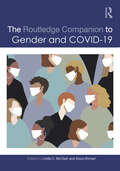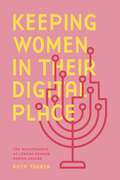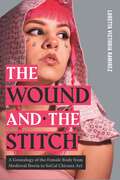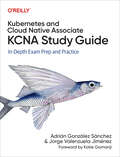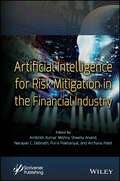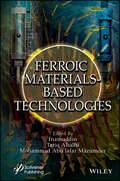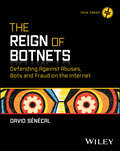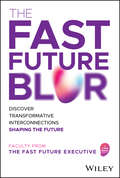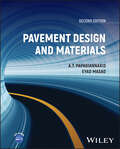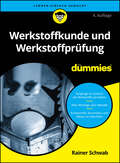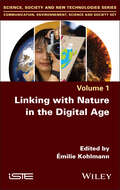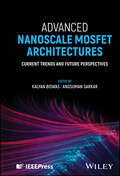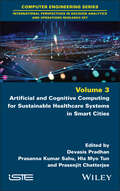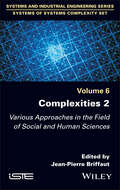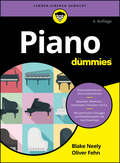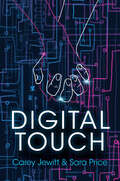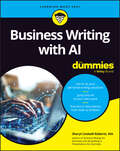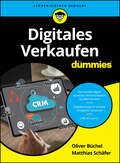- Table View
- List View
The Gospel According To John: Chapters I-xii (Anchor Bible Commentaries Ser.)
by Raymond E. BrownIn the first volume of Raymond E. Brown’s magisterial three-volume commentary on the Gospel According to John, all of the major Johannine questions—of authorship, composition, dating, the relationship of John to the Synoptics (Mark, Matthew, and Luke)—are discussed. The important theories of modern biblical scholarship concerning John are weighed against the evidence given in the text and against prevailing biblical research. In sum, what is attempted is a synthesis of the major scholarly insights that bear on the Fourth Gospel. The translation—as Father Brown states at the outset—strives not for any formal beauty but rather for an accurate and contemporary version: “the simple, everyday Greek of the Gospel has been rendered into the ordinary American English of today.” The result is a translation that will strike the reader with uncommon immediacy. Father Brown also analyzes, in the appendixes, the meaning, use, and frequency of certain key words and phrases that occur in John, and examines the differences between the Johannine and Synoptic treatments of the miracle stories. The chapters of the Gospel translated here in Volume 29 (1–12) comprise the Prologue, which opens with the famous “In the beginning was the Word,” and the Book of Signs, an account of the miracles of Jesus and of his ministry.
The Gospel According To John: Chapters Xiii-xxi (Anchor Bible Ser. #Vol. 29a)
by Raymond E. BrownThis volume concludes Raymond E. Brown's commentary on the Gospel of John. Continuing his study begun in Anchor Bible Volume 29, the author translates the original Greek text into today's English. which allows all readers to make sense of the Gospel.
Matthew (The Anchor Yale Bible Commentaries) (The Anchor Bible)
by W. F. Albright C. S. MannThis is volume twenty-six of "The Anchor Bible", a new translation done book-by-book with accompanying introduction, notes, and comments."Matthew" is the most familiar of the gospels, best known for its parables, miracle narratives, and the long Sermon on the Mount. Recognized by the early Church as the most fitting introduction to the "New Testament", its special concern is to announce Jesus as the fulfillment of the "Old Testament". Hence its emphasis on the Law, on ethics based on the traditional theology of the Covenant, and on the centrality of Messianic hope.This commentary sets the understanding of "Matthew" in the context of its author's own religious and secular background. Believing that the text should be approached directly, the writers of the commentary make constant use of the recently discovered historical and linguistic evidence now available to elucidate it. This approach results in placing Jesus firmly within the framework of ascertainable Jewish tradition in first-century Palestine.The writers hold that the claim of Jesus to fulfill the Law and not to abolish it must be taken seriously. They have therefore taken a fresh look at the legal discussions in Matthew. In the light of their examination, there emerges first a revaluation of the meaning attached to such key words as "parables" and "hypocrite" and then a new and vital significance for such words.The result is a new respect for "Matthew", a highly reliable early source for the ministry of Jesus, and an examination of that ministry uncluttered by the presuppositions of various forms of modern "Platonism."
Mark 1-8 (The Anchor Yale Bible Commentaries)
by Joel MarcusAlthough it appears second in the New Testament, Mark is generally recognized as the first Gospel to be written. Captivating nonstop narrative characterizes this earliest account of the life and teachings of Jesus. In the first installment of his two-volume commentary on Mark, New Testament scholar Joel Marcus recaptures the power of Mark’s enigmatic narrative and capitalizes on its lively pace to lead readers through familiar and not-so-familiar episodes from the ministry of Jesus. As Marcus points out, the Gospel of Mark can be understood only against the backdrop of the apocalyptic atmosphere of the Jewish rebellions of 66-73 c.e., during which the Roman army destroyed the Temple of Jerusalem (70 c.e.). While the Jewish revolutionaries believed that the war was “the beginning of the end” and that a messianic redeemer would soon appear to lead his people to victory over their human enemies (the Romans) and cosmic foes (the demons), for Mark the redeemer had already come in the person of Jesus. Paradoxically, however, Jesus had won the decisive holy-war victory when he was rejected by his own people and executed on a Roman cross. The student of two of this generation’s most respected Bible scholars and Anchor Bible authors, Raymond E. Brown and J. Louis Martyn, Marcus helps readers understand the history, social customs, economic realities, religious movements, and spiritual and personal circumstances that made Jesus who he was. The result is a Bible commentary of the quality and originality readers have come to expect of the renowned Anchor Bible series. Challenging to scholars and enlightening to laypeople, Mark 1-8 is an invaluable tool for anyone reading the Gospel story.
The Language of Asian Gestures: Embodied Words Through the Lens of Film (Routledge Studies in East Asian Translation)
by Jieun Kiaer Loli KimThe Language of Asian Gestures explores Asian gestures as a non-verbal language within the context of films and dramas.This book provides a cross-cultural Asian perspective on a range of important common gestures and their meanings, covering a range of Asian regions including Korea, China, Hong Kong, Japan, Taiwan, Vietnam, Singapore, Thailand, Indonesia, the Philippines, India, and Pakistan. While most studies focus on text-based communication, gestures find themselves overshadowed by text and speech. Asian gestures, too, often reside in the shadow of Eurocentric viewpoints. This book will shift this dynamic and amplify the voices that have typically been marginalised within 20th-century Eurocentric discussions.The book will be informative for students and researchers interested in Asian languages, cultures, film studies, and pragmatics. It bridges the gap between words and gestures, unveiling a world of concealed meanings and enriching our understanding of diverse forms of expression.
The Routledge Handbook of Environmental History (Routledge International Handbooks)
by Mark Carey Sandra Swart Emily O’Gorman William San MartínThe Routledge Handbook of Environmental History presents a cutting-edge overview of the dynamic and ever-expanding field of environmental history. It addresses recent transformations in the field and responses to shifting scholarly, political, and environmental landscapes.The handbook fully and critically engages with recent exciting changes, contextualizes them within longer-term shifts in the field, and charts potential new directions for study. It focuses on five key areas: Theories and concepts related to changing considerations of social justice, including postcolonial, antiracist, and feminist approaches, and the field’s growing emphasis on multiple human voices and agencies. The roles of non-humans and the more-than-human in the telling of environmental histories, from animals and plants to insects as vectors of disease and the influences of water and ice, the changing theoretical approaches and the influence of concepts in related areas such as animal and discard studies. How changes in theories and concepts are shaping methods in environmental history and shifting approaches to traditional sources like archives and oral histories as well as experiments by practitioners with new methods and sources. Responses to a range of current complex problems, such as climate change, and how environmental historians can best help mitigate and resolve these problems. Diverse ways in which environmental historians disseminate their research within and beyond academia, including new modes of research dissemination, teaching, and engagements with stakeholders and the policy arena. This is an important resource for environmental historians, researchers and students in the related fields of political ecology, environmental studies, natural resources management and environmental planning.Chapters 9, 10 and 26 of this book are freely available as a downloadable Open Access PDF at http://www.taylorfrancis.com under a Creative Commons Attribution-Non Commercial-No Derivatives (CC-BY-NC-ND) 4.0 license.
Routledge Handbook of Mental Health Law (Routledge Handbooks in Law)
by Brendan D. Kelly and Mary DonnellyMental health law is a rapidly evolving area of practice and research, with growing global dimensions. This work reflects the increasing importance of this field, critically discussing key issues of controversy and debate, and providing up-to-date analysis of cutting-edge developments in Africa, Asia, Europe, the Americas, and Australia.This is a timely moment for this book to appear. The United Nations’ Convention on the Rights of Persons with Disabilities (2006) sought to transform the landscape in which mental health law is developed and implemented. This Convention, along with other developments, has, to varying degrees, informed sweeping legislative reforms in many countries around the world. These and other developments are discussed here. Contributors come from a wide range of countries and a variety of academic backgrounds including ethics, law, philosophy, psychiatry, and psychology. Some contributions are also informed by lived experience, whether in person or as family members. The result is a rich, polyphonic, and sometimes discordant account of what mental health law is and what it might be.The Handbook is aimed at mental health scholars and practitioners as well as students of law, human rights, disability studies, and psychiatry, and campaigners and law- and policy-makers.
The Routledge Companion to Gender and COVID-19 (Routledge Companions to Gender)
by Linda C. McClain Aziza AhmedThe Routledge Companion to Gender and COVID-19 is the first comprehensive research guide for researchers and students who seek to study and evaluate the complex relationship between gender and COVID-19.This interdisciplinary collection touches on two major themes: first, how gender played a central role in shaping access to testing, treatment, and vaccines. Second, how the pandemic not only deepened existing gender inequalities, but also those along the lines of race, class, sexuality, disability, and immigration status.Bringing together a diverse range of international scholars across a number of disciplinary perspectives, this intersectional and comparative focus on COVID explores topics including the pandemic’s impact on families, employment, childcare and elder care, human rights, as well as gender and political economy and leadership, public health law, disability rights, and abortion access.The Routledge Companion to Gender and COVID-19 is an essential volume for scholars and students of Law, Gender Studies, Sociology, Health, Economics, and Politics.
Keeping Women in Their Digital Place: The Maintenance of Jewish Gender Norms Online
by Ruth TsuriaSince its inception, the internet has been theorized as a democratic force, a public sphere in which hierarchies are flattened. But the internet is not a neutral tool; it has the power to amplify and mirror certain opinions and, as a result, can concretize social norms. So what happens when matters of religious practice and gender identity collide in these—often unregulated—online spaces?In Keeping Women in Their Digital Place, Ruth Tsuria explores how Orthodox Jewish communities in the United States and Israel have used “digital enclaves”—online safe havens created specifically for their denominations—to renegotiate traditional values in the face of taboo discourse encountered online. Combining a personal narrative with years of qualitative analysis, Tsuria examines how discussions in blogs and forums and on social media navigate issues of modesty, dating, marriage, intimacy, motherhood, and feminism. Unpacking the complexity of religious uses of the internet, Tsuria shows how the participatory qualities of digital spaces have been used both to challenge accepted norms and—more pervasively—to reinforce traditional and even extreme attitudes toward gender and sexuality.Original and engaging, this book will appeal to media, feminist, and religious studies scholars and students, particularly those interested in religion in the digital age and Orthodox Jewish communities.
The Wound and the Stitch: A Genealogy of the Female Body from Medieval Iberia to SoCal Chicanx Art (RSA Series in Transdisciplinary Rhetoric)
by Loretta Victoria RamirezThe Wound and the Stitch traces a history of imagery and language centered on the concept of woundedness and the stitching together of fragmented selves. Focusing particularly on California and its historical violences against Chicanx bodies, Loretta Victoria Ramirez argues that woundedness has become a ubiquitous and significant form of Chicanx self-representation, especially in late twentieth-century print media and art.Ramirez maps a genealogy of the female body from late medieval Iberian devotional sculptures to contemporary strategies of self-representation. By doing so, she shows how wounds—metaphorical, physical, historical, and linguistic—are inherited and manifested as ongoing violations of the body and othered forms of identity. Beyond simply exposing these wounds, however, Ramirez also shows us how they can be healed—or rather stitched. Drawing on Mesoamerican concepts of securing stability during lived turmoil, or nepantla, Ramirez investigates how creators such as Cherríe Moraga, Renee Tajima-Peña, Guillermo Gómez-Peña, and Amalia Mesa-Bains repurpose the concept of woundedness to advocate for redress and offer delicate, ephemeral moments of healing.Positioning woundedness as a potent method to express Chicanx realities and transform the self from one that is wounded to one that is stitched, this book emphasizes the necessity of acknowledgment and ethical restitution for colonial legacies. It will be valued by scholars and students interested in the history of rhetorics, twentieth-century Chicanx art, and Latinx studies.
Kubernetes and Cloud Native Associate (KCNA) Study Guide
by Jorge Valenzuela Jiménez Adrián González SánchezLearn how to prepare for—and pass—the Kubernetes and Cloud Native Associate (KCNA) certification exam. This practical guide serves as both a study guide and point of entry for practitioners looking to explore and adopt cloud native technologies. Adrián González Sánchez and Jorge Valenzuela Jiménez teach you not only the core technology fundamentals, but also the community and industry that KCNA serves.With the meteoric rise in cloud adoption, cloud native technologies such as Kubernetes have become the de facto industry standard. Other Kubernetes certifications—including KCSA, CKAD, CKA, and CKS—are all geared toward higher-level technical proficiency. The KCNA is the entry door to your cloud native journey, and the certification exam covers the cloud native environment generally as well as fundamental Kubernetes skills and knowledge.This guide helps you learn:How to best and most efficiently prepare for the KCNA examThe latest cloud native developments and their importanceThe fundamentals of Kubernetes, cloud native development, and related CNCF projectsThe core elements of Kubernetes applicationsThe crucial elements of modern cloud native developmentHow to differentiate and choose cloud native technologiesThe market value of passing the KCNA examInsights and testimonials from key cloud native industry experts
Artificial Intelligence for Risk Mitigation in the Financial Industry
by Narayan C. Debnath Archana Patel Purvi Pokhariyal Shweta Anand Ambrish Kumar MishraArtificial Intelligence for Risk Mitigation in the Financial Industry This book extensively explores the implementation of AI in the risk mitigation process and provides information for auditing, banking, and financial sectors on how to reduce risk and enhance effective reliability. The applications of the financial industry incorporate vast volumes of structured and unstructured data to gain insight into the financial and non-financial performance of companies. As a result of exponentially increasing data, auditors and management professionals need to enhance processing capabilities while maintaining the effectiveness and reliability of the risk mitigation process. The risk mitigation and audit procedures are processes involving the progression of activities to “transform inputs into output.” As AI systems continue to grow mainstream, it is difficult to imagine an aspect of risk mitigation in the financial industry that will not require AI-related assurance or AI-assisted advisory services. AI can be used as a strong tool in many ways, like the prevention of fraud, money laundering, and cybercrime, detection of risks and probability of NPAs at early stages, sound lending, etc. Audience This is an introductory book that provides insights into the advantages of risk mitigation by the adoption of AI in the financial industry. The subject is not only restricted to individuals like researchers, auditors, and management professionals, but also includes decision-making authorities like the government. This book is a valuable guide to the utilization of AI for risk mitigation and will serve as an important standalone reference for years to come.
Ferroic Materials-Based Technologies
by Inamuddin Tariq Altalhi Mohammad Abu Jafar MazumderFERROIC MATERIALS-BASED TECHNOLOGIES The book addresses the prospective, relevant, and original research developments in the ferroelectric, magnetic, and multiferroic fields. Ferroic materials have sparked widespread attention because they represent a broad spectrum of elementary physics and are employed in a plethora of fields, including flexible memory, enormous energy harvesting/storage, spintronic functionalities, spin caloritronics, and a large range of other multi-functional devices. With the application of new ferroic materials, strong room-temperature ferroelectricity with high saturation polarization may be established in ferroelectric materials, and magnetism with significant magnetization can be accomplished in magnetic materials. Furthermore, magnetoelectric interaction between ferroelectric and magnetic orderings is high in multiferroic materials, which could enable a wide range of innovative devices. Magnetic, ferroelectric, and multiferroic 2D materials with ultrathin characteristics above ambient temperature are often expected to enable future miniaturization of electronics beyond Moore’s law for energy-efficient nanodevices. This book addresses the prospective, relevant, and original research developments in the ferroelectric, magnetic, and multiferroic fields. Audience The book will interest materials scientists, physicists, and engineers working in ferroic and multiferroic materials.
The Reign of Botnets: Defending Against Abuses, Bots and Fraud on the Internet (Tech Today)
by David SenecalA top-to-bottom discussion of website bot attacks and how to defend against them In The Reign of Botnets: Defending Against Abuses, Bots and Fraud on the Internet, fraud and bot detection expert David Senecal delivers a timely and incisive presentation of the contemporary bot threat landscape and the latest defense strategies used by leading companies to protect themselves. The author uses plain language to lift the veil on bots and fraud, making a topic critical to your website's security easy to understand and even easier to implement. You'll learn how attackers think, what motivates them, how their strategies have evolved over time, and how website owners have changed their own behaviors to keep up with their adversaries. You'll also discover how you can best respond to patterns and incidents that pose a threat to your site, your business, and your customers. The book includes: A description of common bot detection techniques exploring the difference between positive and negative security strategies and other key concepts A method for assessing and analyzing bot activity, to evaluate the accuracy of the detection and understand the botnet sophistication A discussion about the challenge of data collection for the purpose of providing security and balancing the ever-present needs for user privacy Ideal for web security practitioners and website administrators, The Reign of Botnets is the perfect resource for anyone interested in learning more about web security. It's a can't-miss book for experienced professionals and total novices alike.
The Fast Future Blur: Discover Transformative Interconnections Shaping the Future
by The Fast Future ExecutiveThe future blurs strategy, business models, technology, work, and leadership — are you ready? Fast Future Blur provides invaluable insights and strategic frameworks to navigate the complexity of our current period of rapid and radical transformation (‘Fast Future’ phase). Focused on the interconnected nature of the evolution underway, the book serves as an eye-opener for business leaders, providing guidance in understanding this dynamic and complex landscape. Fast Future Blur delves into 12 key areas of change, including platform businesses, regenerative innovation, artificial intelligence, the future of healthcare, the future of work, the future of mobility, blockchain, metaverse, virtual & augmented reality, leadership, agility, fintech, and the impact from 6 inter-connections. With compelling, powerful, and timely insights from the Fast Future Executive faculty — a global consortium of experts and industry leaders, many of whom are associated with the World Economic Forum, top business and technology schools and leading global companies — Fast Future Blur is an essential resource to prepare for the complexities of the future.
Pavement Design and Materials
by A. T. Papagiannakis E. A. MasadPractical guide for all aspects of pavement engineering, updated with the latest techniques, standards, and software The newly revised and updated Second Edition of Pavement Design and Materials offers a comprehensive treatment of pavement materials, structural analysis, design, evaluation, and economic analysis of asphalt and portland concrete pavements. Written by two highly qualified engineering professors with a wealth of experience in the field, Pavement Design and Materials provides readers with: State-of-the-art techniques for material characterization, including a linear viscoelasticity primer Methods and software for the analysis of flexible and ridgid pavements including the AASHTOWare Pavement ME Design State-of-the-art pavement evaluation techniques including moduli backcalculation methods Pavement economic analysis techniques including the most up-to-date user cost relationships. The book companion website provides: Solved examples in each chapter and the electronic files associated with them An instructor solutions manual for the problems provided at the end of each chapter PowerPoint presentations by chapter to facilitate lecture delivery Pavement Design and Materials is an essential up-to-date textbook on the subject for upper-level undergraduate and graduate level courses on pavement materials and pavement design. It is also a valuable reference for practicing professional engineers involved in the various aspects of roadway pavement material selection and structural design.
Werkstoffkunde und Werkstoffprüfung für Dummies (Für Dummies)
by Rainer SchwabDrum prüfe, wer den Werkstoff findet Werkstoffkunde und Werkstoffprüfung sind für viele Studierende eher Pflicht als Leidenschaft. Rainer Schwab zeigt Ihnen, dass es auch anders geht: Mit Humor und Präzision, mit einfachen Erklärungen und passenden Beispielen erklärt er Ihnen in dieser aktualisierten Auflage die Werkstoffkunde und Werkstoffprüfung so spannend es nur geht. Von den Grundlagen zieht sich der Bogen über die Prüfmethoden hin zu den wichtigen konkreten Werkstoffen und Wärmebehandlungen. So ist dieses Buch das Rundumwohlfühlpaket für jeden, der sich mit dem Thema beschäftigt. Sie erfahren Was die wichtigen Eigenschaften der Werkstoffe sind Wie Sie Härteprüfungen, Zugversuche und Co. richtig durchführen Warum Eisen und Stahl so vielfältig sind Welche wichtigen Werkstoffe es gibt, die nicht aus Eisen sind
Linking with Nature in the Digital Age
by Émilie KohlmannThe use of digital technology in our societies is growing to meet the ever-increasing challenges of data collection, raising awareness, education and understanding nature. Artificial intelligence, for example, appears to be the answer to collecting massive amounts of data on biodiversity at a global scale and facilitating citizen participation in such data collection. Linking with Nature in the Digital Age explores the reconfiguration of our relationship with nature within this digital framework. This book examines this mediated linking from three angles. Firstly, it shows how digital technology can foster the development of links to nature. Then, it describes in greater detail the materiality of these links and how they have evolved with the developments in information technology. Finally, it questions the belief in the digital as a facilitator and opens up new perspectives on our relationship with nature and the living world
Advanced Nanoscale MOSFET Architectures: Current Trends and Future Perspectives
by Angsuman Sarkar Kalyan BiswasComprehensive reference on the fundamental principles and basic physics dictating metal–oxide–semiconductor field-effect transistor (MOSFET) operation Advanced Nanoscale MOSFET Architectures provides an in-depth review of modern metal–oxide–semiconductor field-effect transistor (MOSFET) device technologies and advancements, with information on their operation, various architectures, fabrication, materials, modeling and simulation methods, circuit applications, and other aspects related to nanoscale MOSFET technology. The text begins with an introduction to the foundational technology before moving on to describe challenges associated with the scaling of nanoscale devices. Other topics covered include device physics and operation, strain engineering for highly scaled MOSFETs, tunnel FET, graphene based field effect transistors, and more. The text also compares silicon bulk and devices, nanosheet transistors and introduces low-power circuit design using advanced MOSFETs. Additional topics covered include: High-k gate dielectrics and metal gate electrodes for multi-gate MOSFETs, covering gate stack processing and metal gate modification Strain engineering in 3D complementary metal-oxide semiconductors (CMOS) and its scaling impact, and strain engineering in silicon–germanium (SiGe) FinFET and its challenges and future perspectives TCAD simulation of multi-gate MOSFET, covering model calibration and device performance for analog and RF applications Description of the design of an analog amplifier circuit using digital CMOS technology of SCL for ultra-low power VLSI applications Advanced Nanoscale MOSFET Architectures helps readers understand device physics and design of new structures and material compositions, making it an important resource for the researchers and professionals who are carrying out research in the field, along with students in related programs of study.
Artificial and Cognitive Computing for Sustainable Healthcare Systems in Smart Cities
by Prasenjit Chatterjee Devasis Pradhan Prasanna Kumar Sahu Hla Myo TunArtificial and Cognitive Computing for Sustainable Healthcare Systems in Smart Cities delves into the transformative potential of artificial and cognitive computing in the realm of healthcare systems, maintaining a specific emphasis on sustainability. By exploring the integration of advanced technologies in smart cities, the authors examine and discuss how AI and cognitive computing can be harnessed to enhance healthcare delivery. The book provides focused navigation through innovative solutions and strategies that contribute to the creation of sustainable healthcare ecosystems within the dynamic environment of smart cities. From optimizing resource utilization to improving patient outcomes, this comprehensive exploration provides insight for readers with an interest in the future of healthcare within the era of intelligent urban development.
Complexities 2: Various Approaches in the Field of Social and Human Sciences
by Jean-Pierre Briffaut Daniel KrobAwareness of complexity in science and technology dates back to the 1970s. However, all social systems tend to develop structures that become more complex over time, be it within families, tribes, cities, states, or societal and economic organizations. Complexities 2 covers a broad array of fields, from justice and linguistics to education and organizational management. The aim of this book is to show, without aiming to provide a comprehensive overview, the diversity of approaches and behaviors towards the obstacle of complexity in understanding and achieving human actions. When we see complexity as the incompleteness of knowledge and the uncertainty of the future, we realize that simplifying is not an adequate approach to complexity, even in the humanities and social sciences. This book explores the relationship between order and disorder in this field of knowledge.
Piano für Dummies (Für Dummies)
by Blake Neely Oliver FehnTasten Sie sich an das Pianospielen heran Kaum ein Instrument fasziniert so wie das Piano, sei es als Klavier, Keyboard oder Orgel. Blake Neely und Oliver Fehn bringen Ihnen alles bei, was Sie über die 88 Tasten, drei Pedale und zehn Finger wissen müssen. Sie erhalten eine Einführung in die Rhythmen, Melodien und Harmonien, in die Tonarten Akkorde und Co. So lernen Sie Schritt für Schritt Noten zu lesen, Ihre Finger auf die richtigen Tasten zu setzen, erste Lieder zu spielen und Ihre Spieltechnik nach und nach zu verfeinern. Hörbeispiele zum Download helfen Ihnen dabei. Lernen Sie Klavierspielen ohne Vorkenntnisse mitbringen zu müssen! Sie erfahren Wissenswertes zum Kauf Ihres Instruments Wie eine Tonleiter aufgebaut ist Wie Sie Akkorde greifen – in Dur und Moll Wie Sie Ihr Klavierspiel mit Tremolos, Trillern und Dynamik aufpeppen
Digital Touch
by Carey Jewitt Sara PriceTouch matters. It is fundamental to how we know ourselves and each other, and it is central to how we communicate. Digital touch is embedded in many technologies, from wearable devices and gaming hardware to tactile robots and future technologies. What would it be like if we could hug or touch digitally across distance? How might this shape our sense of connection? How might we establish trust or protect our privacy and safety? Digital Touch is a timely and original book that addresses such questions. Offering a rich account of digital touch, the book introduces the key issues and debates, as well as the design and ethical challenges raised by digital touch. Using clear, accessible examples and creative scenarios, the book shows how touch – how we touch, as well as what, whom and when we touch – is being profoundly reshaped by our use of technologies. Above all, it highlights the importance of digital touch in our daily lives and how it will impact our relationships and way of life in the future. The first work of its kind, Digital Touch is the go-to book for anyone wanting to get to grips with this crucial emerging topic, especially students and scholars of Digital Media and Communication Studies, Digital Humanities, Sensory Studies, and Science and Technology Studies.
Business Writing with AI For Dummies
by Sheryl Lindsell-RobertsLearn how to generate high quality, business documents with AI This essential guide helps business writers and other professionals learn the strengths and weaknesses of AI as a writing assistant. You'll discover how AI can help you by chopping through writer's block, drafting an outline, generating headlines and titles, producing meaningful text, maintaining consistency, proofreading and editing, and optimizing content for search engines. Employees in all industries spend enormous amounts of energy writing, editing, and proofreading documents of all kinds. Now, you can improve your efficiency and boost the quality of your work, thanks to AI writing tools like ChatGPT, Jaspar, Grammarly, and beyond. With clear instructions and simple tips, Business Writing with AI For Dummies guides you through the process of using AI for common business writing tasks. Produce high quality, specialized writing quicker and at a lower cost Use AI to draft business-related content like emails, articles, business plans, grant proposals, bios, websites, and many others Incorporate AI into your writing process to make your workday more efficient Take advantage of AI so you can focus your human creativity on going beyond the basics For business professionals facing tight deadlines or large volumes of writing tasks, this easy-to-use Dummies guide will be a game changer.
Digitales Verkaufen für Dummies: Virtuelle Kommunikation im Vertrieb (Für Dummies)
by Matthias Schäfer Oliver BüchelDigitalisierung für Vertriebserfolge optimal einsetzen Digitales Verkaufen bietet Ihnen jede Menge neuer Chancen. Entwickeln Sie ein neues Mindset und eine erfolgreiche Vertriebsstrategie. Nutzen Sie zusätzliche Vertriebskanäle sowie neue Formen der Kommunikation mit Ihren Kunden. Wie Sie die digitale Klaviatur sicher spielen, Ihre Kunden auf virtuellem Weg ansprechen und digitale Verkaufsabschlüsse erreichen, verraten Ihnen die beiden Verkaufsexperten Oliver Büchel und Matthias Schäfer in ihrem Buch. Sie werden Ihre Kunden digital in den Mittelpunkt rücken und Ihre Produkte oder Dienstleistungen bei Ihrer Zielgruppe noch besser platzieren können. Sie erfahren Wie Sie eine digitale Vertriebsstrategie entwickelnWie CRM, Social Selling, KI, Virtual und Augmented Reality Sie beim Verkaufen unterstützen könnenWie virtuelle Kundenbeziehungen funktionierenWie Sie die neuen Kommunikationsformen richtig einsetzen
